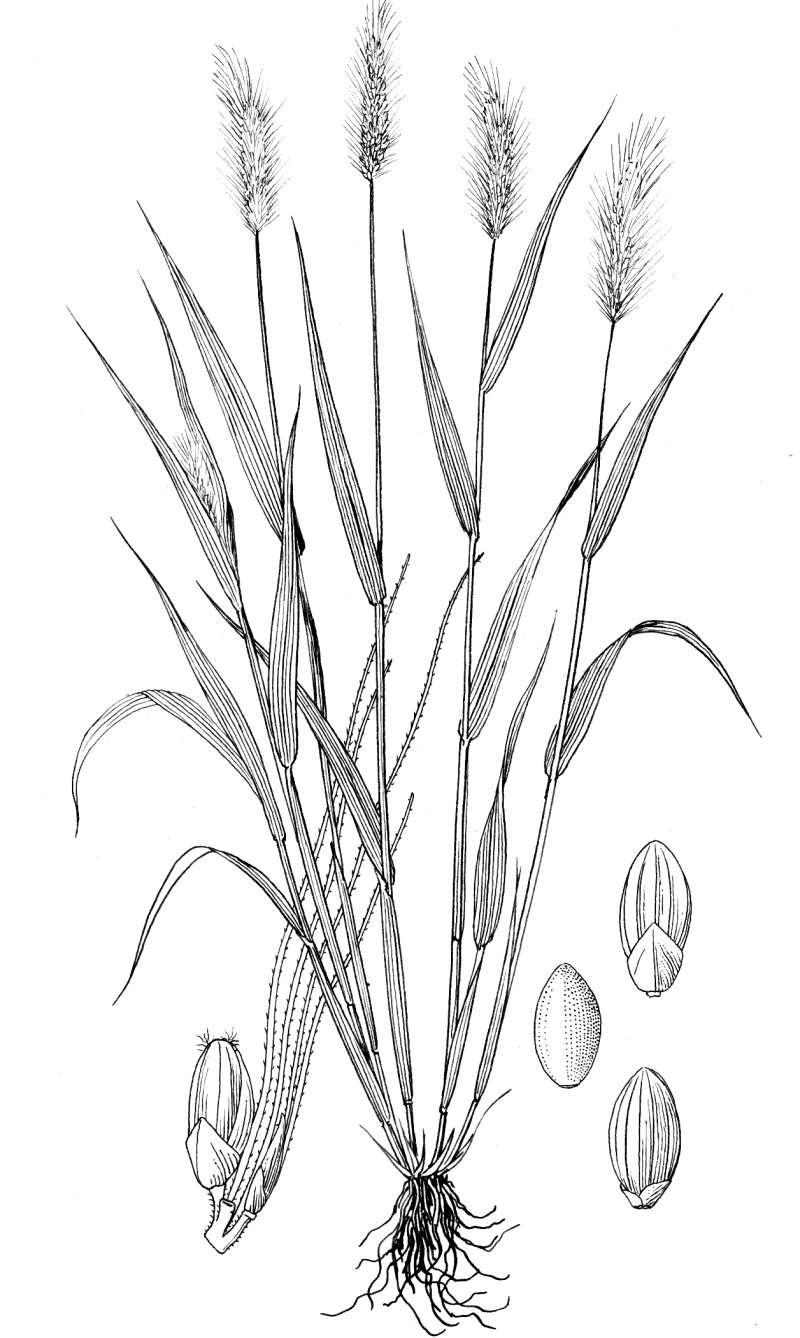
Setaria viridis (L.). Green Bristlegrass Habit: Erect glabrous tufted annual. Culms: 20-90 cm. tall, simple or branched at the base, erect or spreading, mostly glabrous. Blades: Flat, 5-25 cm. long, 4-10 mm. wide, linear-lanceolate, not twisted, long-acuminate, slightly scabrous on both sides. Sheaths: Shorter than the internodes, flattened, smooth except sometimes towards the summit, ciliate on the margins. Ligule: Very short, densely ciliate. Inflorescence: Panicle erect or somewhat nodding, densely flowered, green or purple, cylindric but tapering a little at the summit, usually less than 7 cm. long, excluding the bristles about 8 mm. thick, the axis densely villous with hairs about 1 mm. long, the branches very short bearing mostly 5-6 spikelets, 1-3 upwardly barbed bristles mostly 3-4 times the length of the spikelet, rachis pubescent. Spikelets: 2-2.5 mm. long, elliptic, spikelets failing entire. Glumes: First about one third to one fourth the length of the spikelet, acute, 3-nerved, the second and sterile lemma about as long as the fruit, or the glume shorter, 5-nerved, the sterile palea not fully developed. Fertile lemmas: Elliptic, finely and faintly wrinkled below or only striate, usually shorter than the spikelet, glabrous, finally indurated, obtuse, enclosing a shorter palea. Fruit: Very finely transversely wrinkled or ridged. Habitat: Weed in waste places and cultivated ground. July-September. Kansas Range: Throughout. Remarks: Very common weeds, of some forage value. Synonyms: Setaria viridis (L.) Beauv. var. viridis Setaria viridis (L.) Beauv. var. breviseta (Doell) A.S. Hitchc. Setaria viridis (L.) Beauv. var. weinmannii (Roemer & J.A. Schultes) Borbás